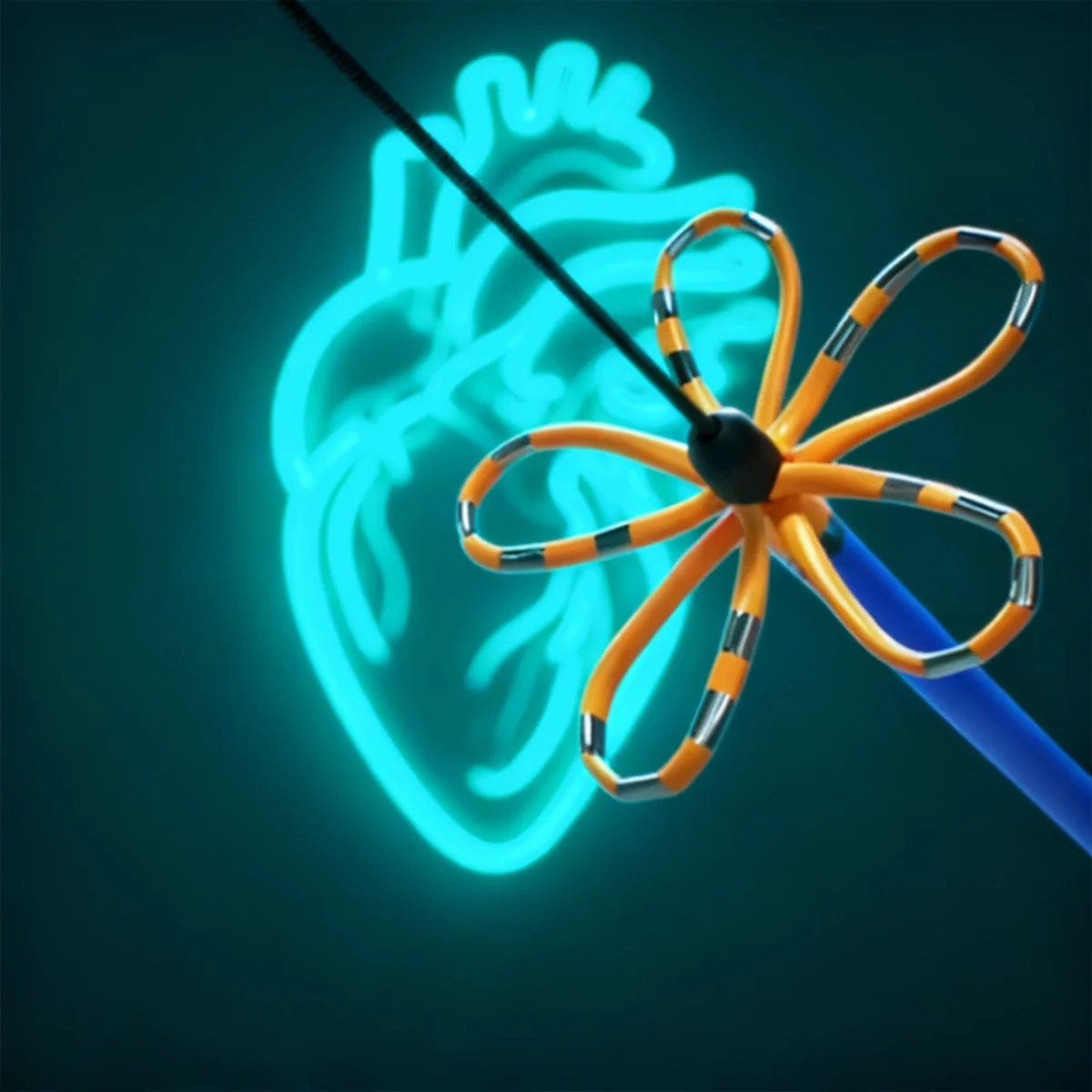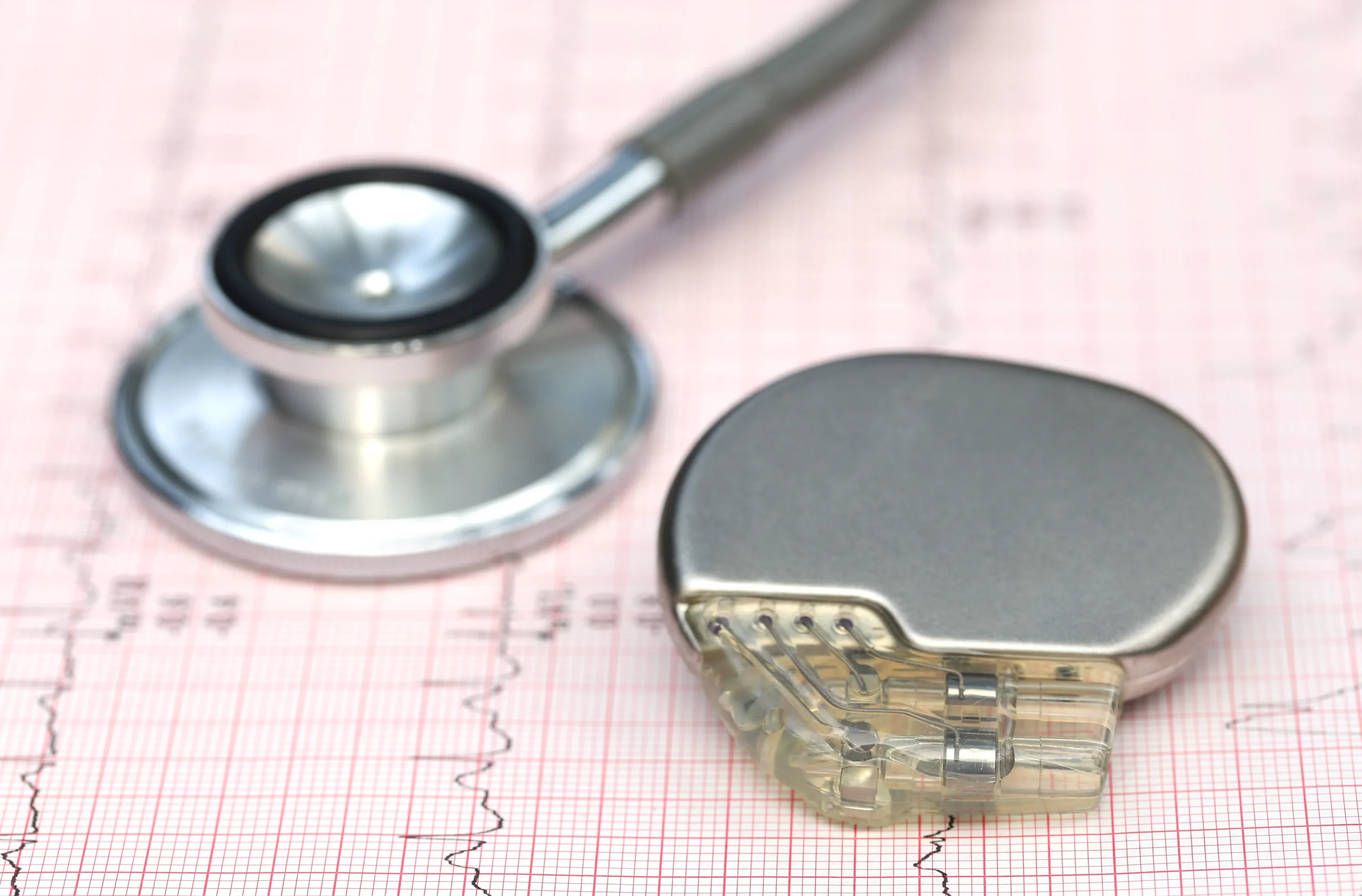Dr Lyne recently trialled a cutting-edge treatment for patients with lower-heart problems
Every year sees exciting new treatments for heart rhythm disorders. This is particularly true for cardiac ablation, a common procedure that uses controlled bursts of energy to treat abnormal heart rhythms.
Two years ago, Dr Lyne helped pioneer “pulsed field” ablation, a high-precision, non-contact form of ablation for people with atrial fibrillation. Recently, he used a similar technology to treat patients with a heart condition called ventricular tachycardia.
After encouraging early trials, the new “dual energy” ablation looks set to provide cardiologists with an important tool in the fight against arrhythmias. Here’s how it works.
What is cardiac ablation?
Many rhythm disorders are caused by rogue electrical signals that develop in patients’ heart tissue. Cardiac ablation uses a controlled burst of energy – usually delivered through a catheter – to gently scar the tissue and disable the faulty electrical circuit. This helps the heart to return to a normal rhythm, relieving unpleasant symptoms and protecting it from further damage.
What energy is used in ablations?
There are several different types of cardiac ablation that use distinct types of energy. Standard ablation uses either heat (radiofrequency ablation) or cold (cryoablation) to create the circuit-breaking scars. Pulsed field ablation (PFA) uses a non-thermal electrical field to create very precise pores in the heart tissue. The pores are just a nanometre wide (about 100,000 times thinner than a sheet of paper!).
So how does dual energy ablation work?
Dual energy ablation combines the two energy types in a single catheter. The surgeon first uses radiofrequency to ablate the surface of the heart tissue, then switches to PFA to create tiny pores over the same area. Both techniques are delivered through a special “lattice-tipped” instrument called a Sphere-9 Catheter, developed by Galway-based device company Medtronic under its Affera brand.
How can dual energy ablation help patients?
The new technology allows surgeons to create deeper, more precise scars in the heart tissue, which can be particularly helpful when an ablation hasn’t worked for a patient in the past. Although the device is mainly being used for patients with atrial problems (the upper chambers of the heart), it also holds promise for people with lower-chamber issues, such as ventricular tachycardia (VT).
What case did Dr Lyne work on?
Dr Lyne worked with a 60-year-old patient who suffered from ischaemic cardiomyopathy (a weakened heart muscle) and ventricular tachycardia. VT is a rhythm disorder where the heart beats faster than usual; it can prevent the heart chambers from pumping enough blood around the body, leading to shortness of breath, fainting and, in the worst cases, heart failure or sudden cardiac arrest. The patient’s symptoms were highly debilitating, often lasting for several minutes at a time.
How did the treatment go?
Dr Lyne and the team treated the patient with dual-energy ablation, and the operation went very well. There were no post-operation complications, and tests in theatre showed the VT had been resolved. When the team checked his pacemaker device three months later, it showed he had remained entirely free of ventricular rhythm problems since the operation.
What’s next?
Dual energy ablation is another encouraging development for arrhythmia treatment. It’s efficient and flexible, and the early results look very positive. Combining the strengths of the two types of energy could allow us to provide more tailored ablation strategies for patients with complex heart rhythm problems. It will be exciting to see how the technology develops from here.
Read Dr Lyne’s case report
You can read Dr Lyne’s article for the Heart Rhythm Society, co-authored by Dublin electrophysiologist James Mannion, at this link:
(Please bear in mind that, while the report is an open-access article, it is written for cardiology professionals.)
Concerned about your heart rhythm? Get in touch with Dr Lyne at Heart Rhythm Cardiologist.






